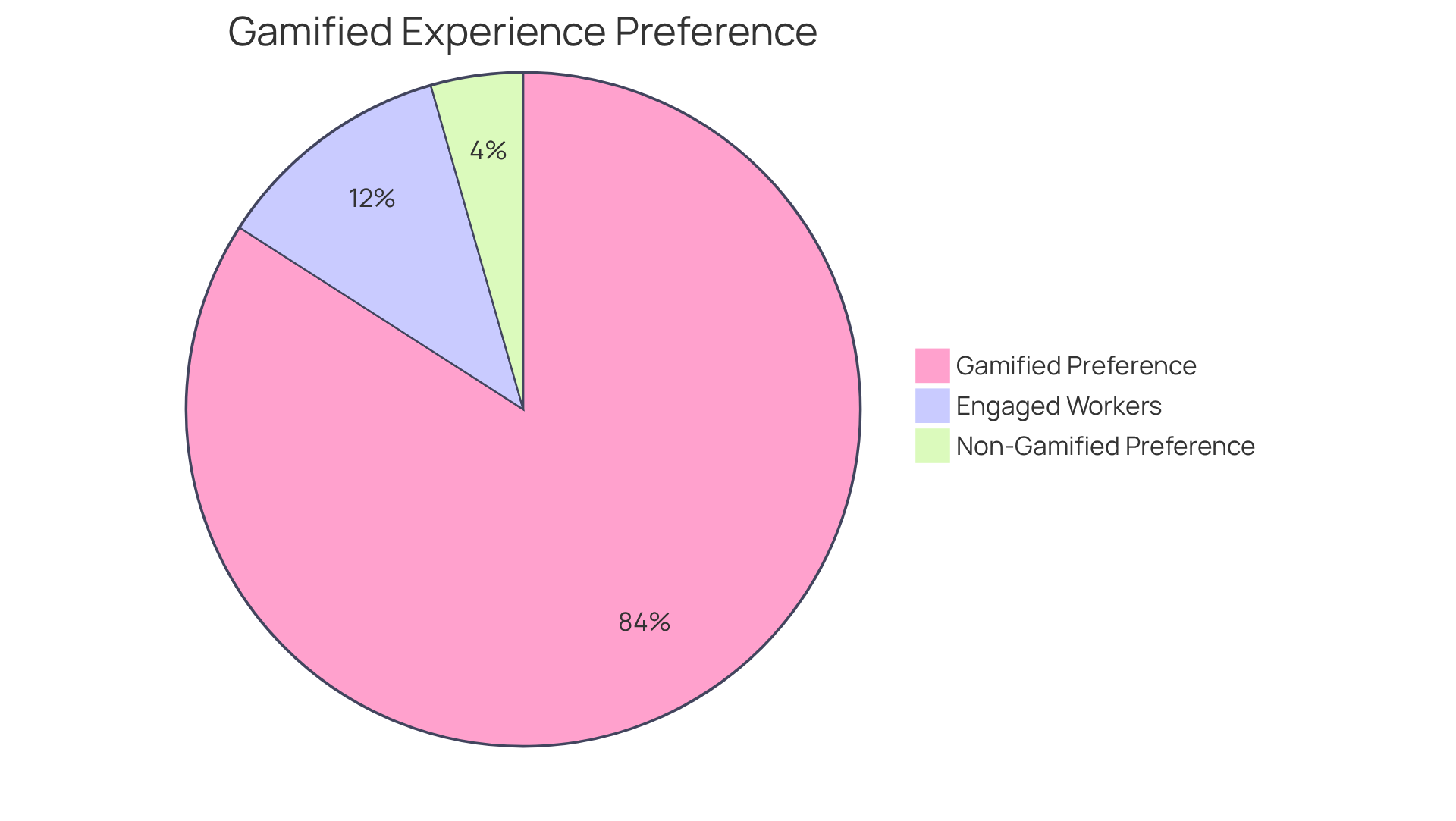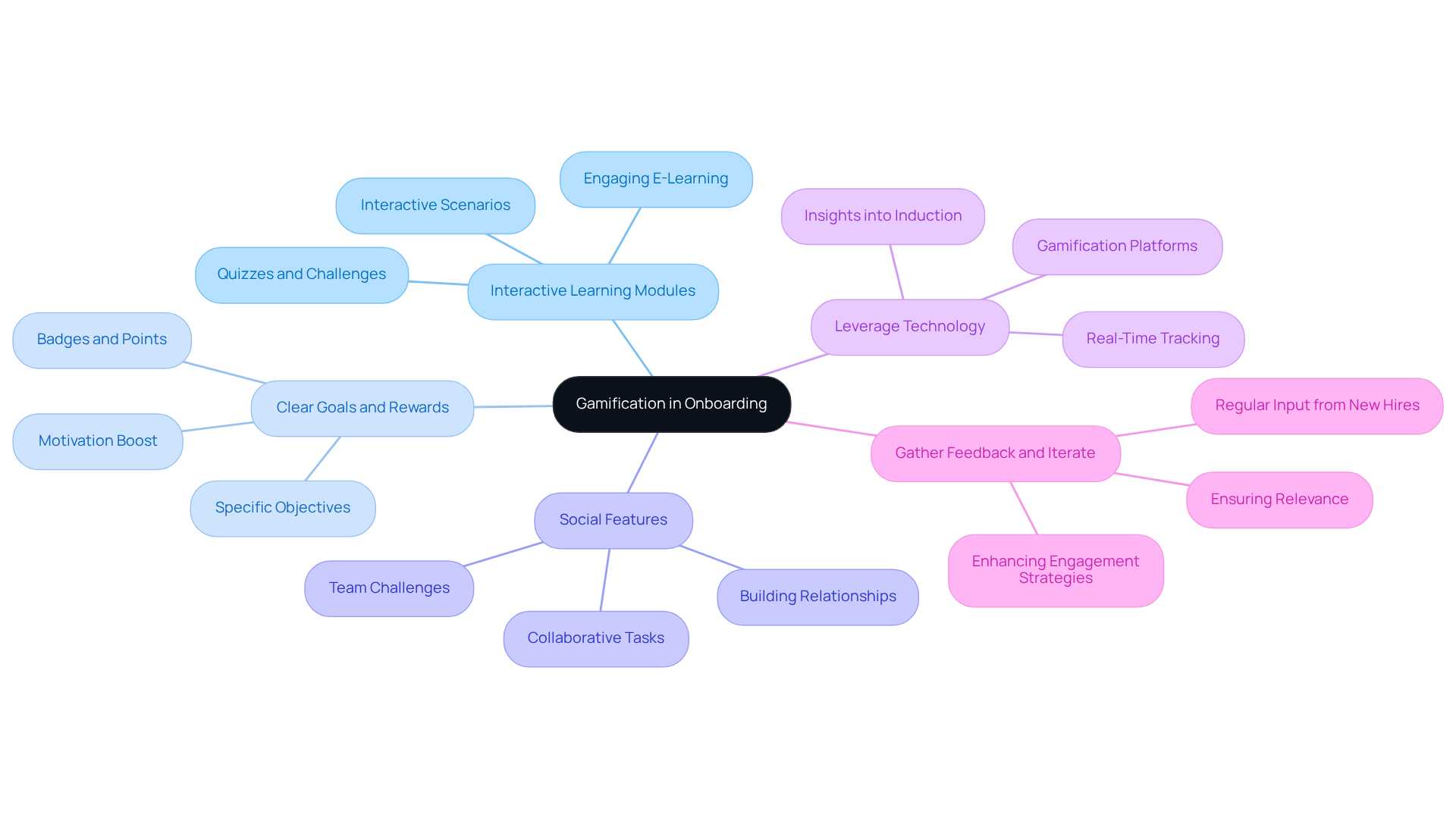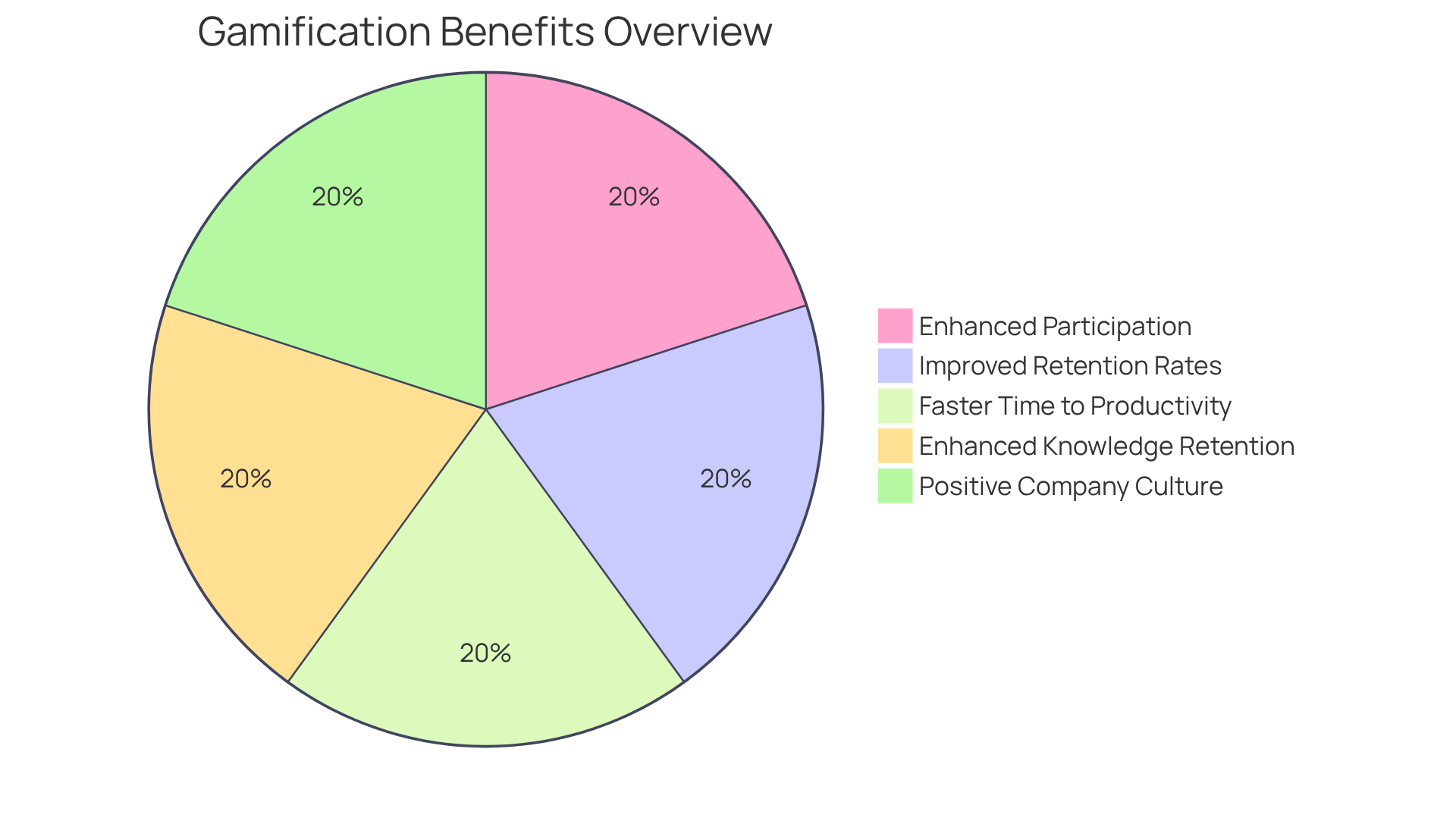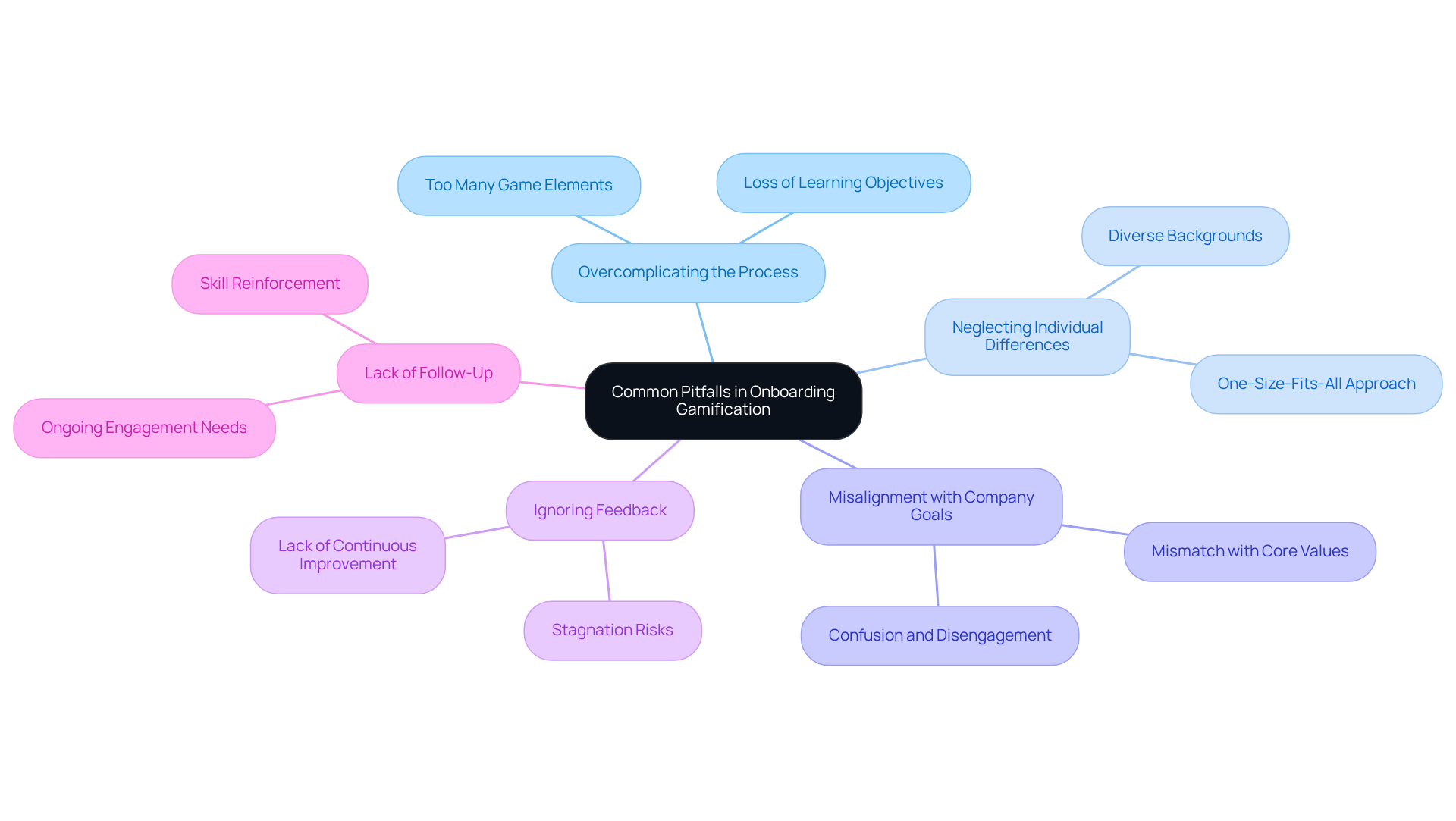
Streamlined Onboarding Processes
|
October 20, 2025
|
Master Gamification in Onboarding: Strategies for Success
Overview
You might be wondering how gamification can really transform the onboarding experience for new employees. Well, let me tell you, it’s all about making things interactive and enjoyable! By incorporating gamification, companies have seen up to a 60% increase in engagement, which is pretty impressive, right? Plus, it also helps improve retention rates, keeping those valuable team members around.
Now, what’s the secret sauce here? It’s essential to:
- Set clear goals
- Include social features
- Provide ongoing feedback
These elements not only enhance the onboarding process but also help avoid common pitfalls. So, if you’re looking to boost employee engagement and retention, gamification might just be the way to go. Let’s dive into how you can implement these strategies effectively!
Key Highlights:
- Onboarding gamification transforms training into an interactive experience using points, badges, and challenges.
- Gamification can increase employee engagement by 60%, enhancing retention and job satisfaction.
- 95% of workers prefer gamified onboarding, contrasting with only 13% of European workers feeling engaged at their jobs.
- Effective gamification strategies include interactive learning modules, clear goals, social features, leveraging technology, and gathering feedback.
- Benefits of gamification include enhanced participation, improved retention rates, faster time to productivity, better knowledge retention, and a positive company culture.
- Common pitfalls in gamification include overcomplicating the process, neglecting individual differences, misalignment with company goals, lack of feedback, and insufficient follow-up after onboarding.
Introduction
Gamification has really become a game changer in employee onboarding, hasn’t it? It takes those dull training sessions and transforms them into engaging experiences that truly captivate new hires. By adding fun elements like points, badges, and leaderboards, organizations can create a lively atmosphere that not only speeds up learning but also boosts job satisfaction and retention.
But hold on—while companies are eager to jump on this innovative bandwagon, they need to be careful of the potential pitfalls that could trip them up.
So, what are the key strategies to successfully implement gamification in onboarding, and how can organizations dodge common mistakes to really tap into its benefits? Let’s dive in and explore!
Define Onboarding Gamification and Its Importance
You might be wondering how game-like features can make the training process more engaging for new hires. Well, the idea is to turn the usual orientation into an interactive experience that's not just effective but also a lot of fun! By adding elements like points, badges, leaderboards, and challenges, organizations can create a lively environment that encourages everyone to participate and learn.
So, why is gamification such a big deal in onboarding? It has the power to speed up how quickly newcomers become valuable team members, help them feel like they belong, and boost overall job satisfaction. Research shows that gamified onboarding can lead to a whopping 60% increase in engagement levels, which can really impact retention rates and staff performance. For example, Alma Hannesdóttir, the Training Director at Arion Bank, mentioned that their gamified training let staff practice scenarios over and over, resulting in a 95% closure of knowledge gaps among their workforce.
And get this: 95% of workers actually prefer a gamified work experience! That really highlights how appealing this approach is. In contrast, only 13% of European workers feel engaged at their jobs, which shows just how much potential game-based strategies have to change the workforce experience. But, it’s important to keep fairness in mind with these game-based initiatives, as any perceived unfairness can lead to negative feelings among employees. By using game-based strategies thoughtfully, organizations can really enhance the onboarding process and create a more engaged and motivated workforce, ultimately leading to better business results.

Implement Effective Gamification Strategies for Onboarding
If you're looking to implement effective gamification in onboarding, you might be wondering where to start. Here are some friendly approaches to consider:
-
Create Interactive Learning Modules: Why not develop engaging e-learning modules? Incorporating quizzes, challenges, and interactive scenarios allows new employees to learn at their own pace while actively participating in the training process.
-
Establish Clear Goals and Rewards: Setting specific objectives for new hires during their training can be a game changer. Offering rewards like badges or points for completing tasks can really motivate them to dive deeper into the material.
-
Utilize Social Features: Think about incorporating social elements, such as team challenges or collaborative tasks. This encourages new hires to interact with their peers, fostering a sense of community and helping to build those all-important relationships within the team.
-
Leverage Technology: Have you considered using gamification in onboarding with platforms or tools? They allow for real-time tracking of progress and achievements, which can boost motivation and provide valuable insights into the induction process.
-
Gather Feedback and Iterate: Don't forget to regularly ask for input from new hires about their integration experience. Using this feedback can enhance your engagement strategies, ensuring they remain relevant and effective.
Now, let’s dive into how these strategies can transform your onboarding process!

Highlight Benefits of Gamification for Engagement and Retention
You might be curious about the advantages of gamification in onboarding. Well, let me tell you, they are quite impressive!
First off, enhanced participation is a game changer. The gamification in onboarding turns the usual induction experience—which can be a bit dull—into an exhilarating journey. This shift leads to higher levels of involvement among new employees. When staff feel engaged, they’re more likely to absorb information and connect with the organization.
Now, let’s talk about improved retention rates. Companies that embrace gamification in onboarding often notice a significant drop in turnover. Why? Because engaged employees feel valued and integrated into the company culture, making them less likely to leave.
And who doesn’t want faster time to productivity? The implementation of gamification in onboarding speeds up the learning process, helping new hires hit their stride more quickly. This efficiency can result in cost savings and a boost in overall performance—talk about a win-win!
Another perk is enhanced knowledge retention. The use of gamification in onboarding makes learning more enjoyable and memorable by incorporating interactive, game-like elements. This means new employees can better retain information, leading to improved performance and a deeper understanding of company processes.
Finally, let’s not overlook the positive company culture that is enhanced by gamification in onboarding. By creating a fun and engaging introduction experience, organizations can attract top talent and encourage collaboration. So, are you ready to explore how gamification can transform your onboarding process?

Identify Common Pitfalls in Onboarding Gamification
You might be wondering how gamification can really boost your onboarding process. While it can significantly enhance the experience, there are a few common pitfalls organizations need to navigate:
-
First off, let’s talk about overcomplicating the process. Sure, adding game elements sounds fun, but too many can overwhelm new hires. It’s all about finding that sweet spot between keeping things engaging and ensuring the essential learning objectives aren’t lost. For example, if you throw in too many complex challenges, it might lead to confusion instead of motivation.
-
Next up is neglecting individual differences. Not everyone responds to gamification the same way. It’s super important to consider the diverse backgrounds and preferences of your new hires when designing these experiences. A one-size-fits-all approach? That might just alienate some staff members.
-
Now, let’s dive into the importance of aligning with company goals. Gamification should really reinforce what your organization is all about. If there’s a mismatch between the gamified elements and your company’s mission, it can create confusion and disengagement. For instance, if the tasks you gamify don’t resonate with your core values, your staff might feel a bit disconnected from their work.
-
Don’t forget about feedback! Gathering and acting on input from new hires is key for continuous improvement. If you ignore this, you risk stagnation and losing relevance in your onboarding process. Organizations that actively seek feedback are often able to adapt their strategies to better meet workforce needs.
-
Lastly, let’s discuss the lack of follow-up. After onboarding, it’s crucial to keep the engagement going with ongoing gamified training or development opportunities. This helps maintain that initial excitement and keeps your staff motivated in their roles. Ongoing involvement is essential for strengthening the skills they picked up during the initial training.
Did you know that organizations incorporating game elements into their orientation procedures can boost worker involvement by as much as 60%? Plus, companies that use gamification in their training and induction processes often see substantial improvements in employee retention and satisfaction. By addressing these challenges, you can create a more effective and engaging onboarding experience!

Conclusion
You might be wondering how incorporating gamification into the onboarding process can really make a difference. Well, it offers a transformative approach that not only boosts engagement but also speeds up how new hires settle into the workplace. By adding game-like elements—think points, badges, and challenges—organizations can create an interactive experience that’s not just enjoyable but also significantly enhances participation and job satisfaction. This strategy has shown real potential in improving retention rates and overall workforce performance, making it a must-have in modern onboarding practices.
Now, let’s dive into some effective strategies for implementing gamification in onboarding:
- Creating interactive learning modules
- Setting clear goals and rewards
- Leveraging technology
These are just a few ways to foster a sense of community among new hires. Plus, keeping them engaged and motivated throughout their training is key. It’s also important to watch out for common pitfalls, like overcomplicating the process or ignoring individual differences—these insights can really help organizations refine their gamification efforts and steer clear of potential setbacks.
Ultimately, embracing gamification in onboarding isn’t just about making training more fun; it’s about cultivating a workplace culture that values engagement, collaboration, and continuous improvement. Organizations that prioritize these strategies can expect to see a noticeable boost in employee satisfaction and performance. As the workforce evolves, investing in innovative onboarding methods like gamification will be crucial for attracting and retaining top talent, ensuring a thriving and dynamic workplace environment.
Frequently Asked Questions
What is onboarding gamification?
Onboarding gamification involves incorporating game-like features into the training process for new hires, making the orientation experience interactive and enjoyable through elements such as points, badges, leaderboards, and challenges.
Why is onboarding gamification important?
It is important because it can accelerate the time it takes for new employees to become valuable team members, enhance feelings of belonging, and increase overall job satisfaction. Research indicates that gamified onboarding can lead to a 60% increase in engagement levels, positively impacting retention rates and staff performance.
What are some benefits of gamified onboarding?
Benefits of gamified onboarding include improved engagement, faster knowledge retention, and a significant reduction in knowledge gaps among employees. For instance, Arion Bank reported a 95% closure of knowledge gaps due to their gamified training approach.
How do employees feel about gamified work experiences?
A significant majority, 95% of workers, prefer a gamified work experience, highlighting its appeal and potential to enhance employee engagement compared to traditional methods.
What challenges should organizations consider when implementing gamification?
Organizations should be mindful of fairness in gamified initiatives, as any perceived unfairness can lead to negative feelings among employees. Thoughtful implementation of game-based strategies is essential to enhance the onboarding process effectively.
👍
What others are liking
5 Steps to outline your ideal documentation structure
5 MINS READ
Where to start the your journey of mapping out your ideal documentation structure, aligning it with the very heartbeat of your organization?
Defining a winning level of detail in your process
3 MINS READ
What is too much detail, and what is too little? This article described in that winning level detail about what detail is enough.





